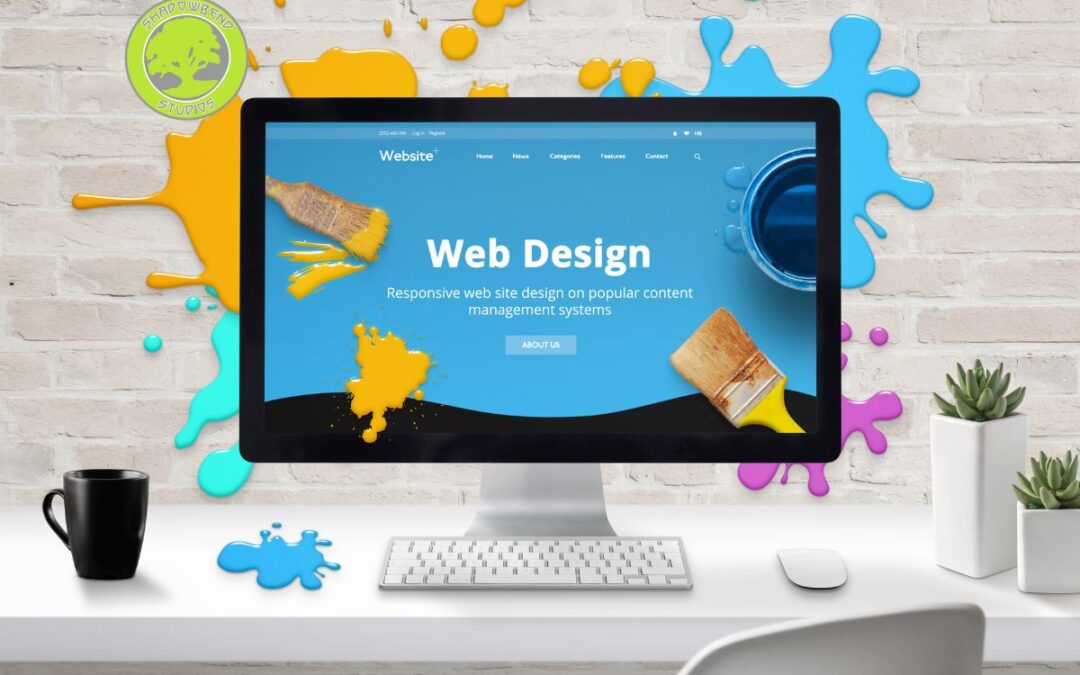
Business Articles
Is graphic design still worth it in 2025?
Graphic design in the marketplace has evolved rapidly, but its value remains strong. As technology, culture, and consumer expectations shift, the role of designers adapts rather than diminishes. This post explores why graphic design is still worth pursuing in 2025, how the marketplace has changed, and how you can position yourself to thrive.
Introduction: why this question matters in 2025
Every few years, the question surfaces: is graphic design still worth it? In 2025, the answer is a resolute yes for many reasons. The demand for visually compelling, accessible, and effective communication continues to grow as brands seek to stand out in crowded digital spaces. Graphic design in the marketplace is not just about making things look pretty; it’s about solving problems, guiding user experiences, and telling stories that resonate. Whether you’re a student, freelancer, or in-house designer, understanding the current landscape helps you leverage your skills for value and impact.
The current state of the marketplace for graphic design
A saturated yet vibrant marketplace
The graphic design in the marketplace is competitive, with countless freelancers, agencies, and in-house teams. Saturation often gets framed as a downside, but it also fuels innovation. Designers are pushed to differentiate through a distinctive style, process, or domain expertise. Specialization, branding for fintech, packaging for sustainable products, or UI design for electronic health records, can create clear demand. In 2025, versatility remains vital, but depth in a niche can command premium fees and stronger client trust.
The rise of hybrid skill sets
The modern designer often blends traditional craft with technical and strategic capabilities. Proficiency in typography, color theory, and layout remains foundational, but competencies in user experience (UX), user interface (UI), motion graphics, and data visualization add significant value. The ability to translate insights from research into design decisions helps ensure that work moves beyond aesthetics into measurable outcomes. This hybrid skill set is a hallmark of graphic design in the marketplace today.
Value-based pricing and measurable impact
Clients increasingly expect design to contribute to business outcomes. Instead of charging by the hour, many designers and agencies are adopting value-based pricing, pricing packages, or retainer models that align with project goals. Demonstrating impact through metrics, conversion rate improvements, engagement, or time-on-task reductions, can justify premium pricing. This shift reinforces the idea that graphic design is an investment, not a cost.
Why graphic design remains essential
Visual storytelling that builds trust
Humans are highly visual, and first impressions often hinge on design quality. A strong visual identity communicates credibility, consistency, and professionalism. In marketplaces crowded with competing messages, good graphic design helps brands tell a coherent story across logos, websites, social media, packaging, and ads. This storytelling is not superficial; it’s a strategic tool for guiding perception and behavior.
Usability and accessibility as design outcomes
Design is not just about beauty; it’s about making information accessible and usable. In 2025, accessibility standards are increasingly integrated into the design process. Clear typography, sufficient contrast, and intuitive layouts improve user experience for everyone, including people with disabilities. Graphic design therefore contributes to inclusive experiences, expanding reach and compliance while enhancing usability.
Branding as a strategic asset
A strong brand identity is a long-term asset. Logos, color palettes, typography systems, and brand guidelines create consistency that supports recognition and trust. In the graphic design in the marketplace, branding remains a central service area, but it now often intersects with product design, marketing strategy, and content creation. A cohesive brand acts as a north star for all communications.
How to thrive as a graphic designer in 2025
Build a portfolio that demonstrates value
Showcase case studies that connect design decisions to outcomes. Include before-and-after visuals, metrics, and narratives that explain how your work influenced user behavior or business results. Highlight projects that required cross-functional collaboration and complex problem-solving.
Develop a niche without losing versatility
While depth in a niche can command premium, maintain versatility to adapt to different clients. Consider specializing in sectors with continuous demand, such as fintech, healthcare, sustainability, or e-commerce, while staying proficient in broad design disciplines.
Embrace collaborative workflows and tools
Design in 2025 often involves teams and stakeholders across disciplines. Proficiency with collaborative platforms (like design systems, component libraries, and project management tools) reduces friction and accelerates delivery. Documenting design decisions in design systems and maintaining accessible repositories can improve consistency and speed.
Invest in continuous learning
The design landscape evolves quickly. Ongoing education in typography, color theory, accessibility, motion design, and emerging technologies (AR/VR, generative AI-assisted design, etc.) helps designers stay competitive. Participation in communities, conferences, and critique groups can provide fresh perspectives.
Communicate value clearly
Develop the ability to articulate design reasoning in business terms. Prepare briefs that tie design choices to user needs and business objectives. Create compelling narratives for pitches, proposals, and presentations that demonstrate ROI.
Common myths debunked
- Myth: Graphic design is mostly about aesthetics. Reality: Great design blends aesthetics with usability, accessibility, and strategic alignment.
- Myth: AI will replace designers. Reality: AI is a tool that can augment designers, handling repetitive tasks or generating options while humans provide judgment, empathy, and strategic direction.
- Myth: Only large agencies can command high fees. Reality: With a strong portfolio, freelancers and boutique studios can compete for sophisticated work and maintain healthy margins.
Final thoughts
Graphic design in the marketplace in 2025 remains a dynamic and valuable discipline. Its worth comes from the ability to transform complex information into clear, compelling, and accessible visuals; to craft brands that endure; and to improve user experiences across digital and physical touchpoints. While the landscape has shifted toward hybrid skills, value-based pricing, and cross-functional collaboration, the core purpose of graphic design, to communicate effectively and creatively, has never been more essential. For those who stay curious, invest in learning, and prioritise outcomes, graphic design is not only worth it in 2025; it’s a career and craft with lasting potential.
Contact Shadowbend Studios today for your next Graphic Design project!

Technical Articles
What is Web Hosting and Its Types?
Web hosting is the service that makes a website accessible on the internet. Without hosting, your website would exist only as files on your computer, invisible to everyone else. With hosting, your site is stored on powerful servers and delivered to visitors whenever they type your domain name. In short, web hosting is the foundation that allows websites to be found, loaded, and interacted with online.
Why Web Hosting Matters
Choosing the right hosting plan affects site speed, reliability, security, and scalability. A good host provides fast servers, robust uptime, secure data handling, easy management tools, and helpful support. For businesses and individuals alike, understanding the different types of web hosting helps you match your needs with the right level of performance and cost.
Shared Hosting: Affordable and Easy
Shared hosting is often the first step for new websites. In a shared hosting environment, many websites share the same physical server and its resources (CPU, RAM, storage, bandwidth). Because resources are shared, the cost is typically pay-as-you-go and very economical.
- Pros: Low cost, easy setup, maintenance handled by the hosting provider.
- Cons: Resource limitations, potential performance fluctuations during traffic spikes, less control over server configuration.
Shared hosting is suitable for small personal sites, blogs, and startups with modest traffic. It’s a practical way to get online quickly without breaking the bank.
Virtual Private Server (VPS) Hosting: A Balance of Power and Control
VPS hosting uses virtualization to divide a single physical server into multiple virtual servers. Each VPS has allocated resources, giving you more control and predictable performance compared to shared hosting.
- Pros: Greater performance stability, more control over software and server settings, scalable resources.
- Cons: More technical management required than shared hosting, higher cost.
VPS is ideal for growing websites, medium-sized businesses, and applications that need custom configurations or specific software versions while still keeping a reasonable price point.
Dedicated Hosting: Full Control, Full Responsibility
Dedicated hosting provides an entire physical server exclusively for your website. You have complete control over the server environment, including hardware, operating system, and software.
- Pros: Maximum performance and customization, excellent security, no noisy neighbors.
- Cons: Higher cost, requires server administration expertise, higher maintenance burden.
Dedicated hosting is best for large enterprises, high-traffic sites, and applications that demand specialized setups or stringent security requirements.
Cloud Hosting: Modern, Scalable, and Flexible
Cloud hosting uses a network of connected servers to host your site. Your website can run across multiple machines, which means resources scale up or down automatically based on demand.
- Pros: Excellent uptime and redundancy, seamless scalability, pay-for-what-you-use pricing, flexible performance.
- Cons: Variable costs, potential complexity in cost management.
Cloud hosting is popular for websites with fluctuating traffic, e-commerce stores, and apps needing resilient performance and automatic scaling.
WordPress Hosting: Optimized for a Popular Platform
WordPress hosting is a specialized type of hosting optimized for WordPress sites. It typically includes features like one-click WordPress installation, automatic updates, theme and plugin support, and performance enhancements tailored to WordPress.
- Pros: Simplified management for WordPress sites, performance and security optimizations, expert support.
- Cons: Limited to WordPress use, may include higher renewal rates for specialized features.
WordPress hosting helps bloggers, small businesses, and agencies that rely on WordPress to deliver fast, secure, and easy-to-manage websites.
Reseller Hosting: Selling Space to Others
Reseller hosting allows you to purchase large hosting resources and resell them to your own clients under your brand. It’s essentially leasing server space and providing hosting services to multiple end-users.
- Pros: Potential revenue stream, white-label options, control over pricing and packages.
- Cons: Requires customer support infrastructure, more business management.
Reseller hosting is a good fit for aspiring hosting providers, digital agencies, and freelancers who want to offer hosting services without maintaining physical servers themselves.
Free Hosting: A Cautious Consideration
Free hosting providers offer basic hosting at no cost, often with limitations such as restricted bandwidth, compulsory ads, limited storage, and less control. While it can be appealing for very small or experimental projects, it’s rarely suitable for serious websites or professional usage.
- Pros: No upfront cost, quick start.
- Cons: Limited features, potential reliability issues, ads, and restricted performance.
If you’re testing an idea or learning web tech, free hosting can be a stepping stone before investing in a paid plan.
How to Choose the Right Web Hosting
- Assess your needs: Traffic expectations, storage requirements, and whether you need special software or configurations.
- Consider performance: Uptime guarantees, server speed, CDN availability, and caching options.
- Evaluate scalability: How easily you can upgrade resources as your site grows.
- Look at support: Availability of 24/7 support, knowledge base, and community forums.
- Review security features: SSL certificates, backups, malware scanning, and DDoS protection.
- Check pricing and renewal terms: Hidden fees, renewal rates, and contract length.
The Role of Content Delivery Networks (CDNs)
A CDN stores copies of your site on multiple servers worldwide, delivering content from the closest location to the visitor. This reduces latency and improves load times for users regardless of their geographical location. Many hosting plans include CDN integrations or offer it as an add-on.
Final Thoughts
Web hosting is the backbone of any online presence. By understanding the different types of web hosting, from shared hosting to cloud hosting, VPS, dedicated servers, WordPress hosting, and beyond, you can align your choice with your goals, budget, and growth trajectory. Whether you’re launching a personal blog, a portfolio site, or a high-traffic ecommerce platform, the right hosting environment helps you deliver fast, reliable, and secure experiences to your visitors. Remember to consider performance, scalability, security, and support as you evaluate options, and you’ll be well on your way to a successful online venture.
Contact us today and let’s talk about your website hosting strategy

Technical Articles
What are the steps for web development?
What are the steps for web development? Web development is both an art and a discipline, blending creativity with structured processes to deliver functional, high-quality websites. If you’re planning a new site or revamping an existing one, understanding the web design process is essential. This guide walks you through the key stages, best practices, and practical tips to navigate from concept to launch.
Introduction: Why a structured web design process matters
A well-defined web design process helps teams stay aligned, manage expectations, and deliver measurable results. It reduces rework, speeds up decisions, and ensures that users’ needs guide every choice. By following the web design process, you can balance aesthetics with performance, accessibility, and maintainability. In short, a clear path from ideation to deployment makes web development more efficient and more likely to succeed.
1) Discovery and planning
The journey begins with discovery. Here, you gather requirements, define goals, and establish success metrics. Key activities include:
- Stakeholder interviews: Understand business goals, target audience, and constraints.
- Target audience personas: Build empathy for users your site will serve.
- Competitive audit: Analyze similar sites to identify opportunities and benchmarks.
- Scope and budgeting: Define what will be delivered and how it will be funded.
- Tech stack and architecture: Decide on frontend frameworks, CMS, hosting, and data considerations.
The output of this phase is a brief or kickoff document that guides the rest of the project. A clear web design process at this stage prevents scope creep and ensures everyone agrees on purpose and priorities. The term web design process here encompasses all activities from planning through to execution, not only the visual aspects.
2) Information architecture and sitemap
Next comes organizing content in a way that makes sense to users and search engines. Information architecture (IA) includes:
- Sitemap: A high-level outline of pages and their relationships.
- Navigation design: Primary, secondary, and utility menus that help users find information quickly.
- Content inventory: Catalog existing content and determine what to keep, rewrite, or create.
- Taxonomy and labeling: Consistent naming conventions for menus, headings, and metadata.
A solid IA reduces user friction and sets the stage for intuitive web design. It also informs accessibility planning, ensuring that screen readers and keyboard navigation follow logical paths.
3) Wireframing and prototyping
With structure in place, wireframes provide skeletal layouts without visual styling. This stage focuses on layout, information hierarchy, and interaction points. Prototypes, ranging from low-fidelity clickable sketches to high-fidelity interactive models, allow stakeholders to experience flows before any code is written.
Benefits of wireframing and prototyping include:
- Validating layout decisions early.
- Gathering feedback from users and stakeholders.
- Reducing costly changes during development.
During this step, keep accessibility in mind: ensure logical tab orders, visible focus states, and semantic markup foundations.
4) Visual design and branding
Design is where aesthetics meet usability. In this phase, designers translate IA and wireframes into visual concepts that reflect branding, tone, and user expectations. Key considerations:
- Color theory and contrast: Ensure readability and accessibility for all users.
- Typography: Readable fonts, appropriate sizes, and responsive behavior.
- Imagery and icons: Consistent style that reinforces brand identity.
- UI components: Buttons, forms, cards, and other primitives that are reusable across pages.
- Design system: A cohesive set of rules, tokens, and components that streamline development.
While the web design process emphasizes function, cohesion and visual consistency improve credibility and user satisfaction.
5) Content strategy and creation
Content is the core of any website. This step involves writing, editing, and organizing content that informs, persuades, and converts. Practical tasks include:
- SEO-focused copy: Craft clear headlines, meta descriptions, and keyword-rich content.
- Accessibility-aware content: Descriptive alt text for images, semantic headings, and readable language.
- Multimedia planning: Images, videos, and animations that enhance understanding without slowing performance.
- CMS content models: Define content types, fields, and workflows for maintainers.
A thoughtful content strategy supports user goals and helps search engines understand your site.
6) Frontend and backend development
This is where design becomes interactive. Development typically splits into frontend (client-side) and backend (server-side) work, though modern sites often blend both with APIs and headless architectures.
- Frontend: Implement responsive layouts, interactive components, form validation, and accessibility features. Popular front-end technologies include HTML, CSS, JavaScript, and modern frameworks that suit the project, such as React, Vue, or Angular.
- Backend: Build server logic, databases, authentication, and API endpoints. Choices depend on performance, scalability, and team expertise. Common stacks include Node.js, Python (D Django/Flask), Ruby on Rails, PHP, or .NET.
- API and integrations: Connect services like payment gateways, analytics, CRM, and content delivery networks.
- Performance optimization: Code-splitting, lazy loading, caching strategies, and image optimization all contribute to faster experiences.
The aim is a robust, maintainable codebase with clean architecture and clear separation of concerns.
7) Testing and quality assurance
Quality assurance ensures the site works as intended across devices and contexts. Core testing activities:
- Functional testing: Verify features perform correctly.
- Cross-browser and cross-device testing: Ensure consistent behavior on desktops, tablets, and mobile.
- Accessibility testing: Check keyboard navigation, screen reader compatibility, and color contrast.
- Performance testing: Measure page load times, runtime efficiency, and resource usage.
- Security testing: Validate input handling, authentication flows, and data protection.
Automated tests, manual testing, and user testing all play a role in delivering a reliable product.
8) Deployment and release
Deployment moves the project from code to live users. Preparation includes:
- Environment setup: Production servers, databases, and CDN configurations.
- Version control and deployment pipelines: Continuous integration and continuous deployment (CI/CD) to streamline releases.
- Monitoring and rollback plans: Uptime monitoring, error tracking, and strategies for quick rollback if needed.
- SEO and analytics setup: Proper redirects, sitemaps, and analytics tagging.
A smooth deployment reduces downtime and ensures a positive initial user experience.
9) Maintenance and evolution
A website is never truly finished. Ongoing maintenance covers:
- Regular content updates: Fresh, relevant content for visitors and search engines.
- Technical updates: Patching dependencies, updating frameworks, and security fixes.
- Performance monitoring: Ongoing optimization for speed and resource usage.
- Iterative improvements: Data-driven tweaks based on user behavior, experiments, and feedback.
A proactive approach keeps the site secure, fast, and aligned with user needs over time.
What are the steps for web development? – Final thoughts
The web design process is a structured journey from concept to live site and beyond. By following discovery, IA, design, content creation, development, testing, deployment, and maintenance phases, teams can deliver websites that not only look good but perform reliably and scale with growth. Remember that communication, collaboration, and a user-centered mindset are as important as any technical skill. If you stay focused on the web design process and continuously measure outcomes, you’ll build sites that meet business goals and delight users.
If you are asking yourself “What are the steps for web development?” Contact us today and let us help you through the steps of developing a website for your business!

Technical Articles
How is SEO Used in Marketing?
Search engine optimization (SEO) is a foundational pillar of modern marketing. It shapes how a brand appears in search results, influences consumer perception, and drives sustainable, long-term growth. This post explores how SEO is used in marketing, the components that make it effective, and practical strategies you can implement today.
Introduction: Why SEO Matters in Marketing
In the digital marketplace, visibility is everything. Consumers increasingly turn to search engines to discover products, services, and information. SEO helps your content align with the intent of these searches, making it more likely that your brand will appear when potential customers are looking for what you offer. By integrating SEO into marketing strategy, you can improve brand awareness, generate high-quality traffic, and boost conversion rates without relying solely on paid advertising.
Keywords to watch: search engine optimization, organic traffic, SERP (search engine results page).
Understanding the Core Components of SEO
SEO is not a single tactic but a cohesive system. It combines technical, on-page, and off-page elements to improve ranking, relevance, and authority.
Technical SEO: The Foundation
Technical SEO ensures search engines can crawl, index, and understand your site. Key aspects include:
- Website speed and performance
- Mobile-friendliness and responsive design
- Secure protocols (HTTPS)
- Structured data and schema markup
- XML sitemaps and proper robots.txt usage
Without a solid technical foundation, even great content may struggle to rank. In marketing, technical optimization supports user experience and ensures your messages reach the intended audience efficiently.
On-Page SEO: Relevance and Clarity
On-page optimization focuses on the content and HTML source elements on your own site. Important practices include:
- Keyword research and intent alignment
- Optimized title tags and meta descriptions
- High-quality, informative headings and content
- Internal linking that guides user navigation
- Image optimization with alt text
For marketers, on-page SEO is where you translate audience needs into helpful content, demonstrating value and guiding users toward conversion goals.
Off-Page SEO: Authority and Trust
Off-page SEO revolves around signals from outside your site that influence ranking. The most influential factor is backlinks from reputable sources. Other signals include:
- Brand mentions and social signals
- Guest blogging and partnerships
- Online reviews and reputation management
In a marketing context, off-page SEO expands reach, builds credibility, and nurtures relationships with other brands and audiences.
How SEO Integrates with Marketing Channels
SEO doesn’t exist in a vacuum. It complements and enhances other marketing channels by aligning messaging, optimizing spend, and improving user experience.
Content Marketing
Content is central to SEO. High-quality blog posts, guides, case studies, and evergreen resources attract organic traffic and establish your brand as an authority. A well-researched content strategy targets buyer personas and aligns with the buyer’s journey, increasing the likelihood of conversions over time.
Social Media and SEO
While social signals are not the primary ranking factor, social channels amplify content distribution and engagement. Shared content can attract backlinks, drive traffic, and improve brand visibility. Integrating SEO best practices into social campaigns helps ensure that content remains discoverable and searchable.
PPC and SEO Synergy
Paid search campaigns and SEO often work best when coordinated. Data from paid campaigns can inform keyword strategy, while SEO insights help reduce dependence on paid media by boosting organic visibility. A balanced approach combines the immediacy of PPC with the longevity of SEO.
Email Marketing and SEO
Email campaigns can promote SEO-friendly content, such as in-depth guides or product pages optimized with relevant keywords. Additionally, signals like time on page and low bounce rates, driven by engaging content, can indirectly influence SEO performance.
Keyword Research: The Heart of SEO in Marketing
Effective search engine optimization starts with discovering what your audience is searching for and how they phrase their questions. A robust keyword research process includes:
- Identifying core topics relevant to your industry
- Analyzing search intent (informational, navigational, transactional)
- Assessing keyword difficulty and search volume
- Prioritizing long-tail keywords for higher conversion potential
- Mapping keywords to specific pages or content types
In marketing, precise keyword selection helps tailor messages, optimize landing pages, and guide content creation to meet real user needs.
Measuring Success: SEO Metrics for Marketers
To prove the value of SEO within your marketing strategy, track a mix of outcomes that reflect visibility, engagement, and business impact:
- Organic traffic growth and search impression share
- Keyword rankings for targeted terms
- Click-through rate (CTR) from search results
- Bounce rate and time on page for SEO-driven pages
- Conversion rate and assisted conversions from organic channels
- Backlink quality and domain authority
Regular reporting aligns SEO efforts with marketing objectives and demonstrates ROI over time.
Best Practices: Building a Sustainable SEO-Driven Marketing Plan
A durable SEO strategy requires consistency, quality, and adaptability. Here are practical best practices for marketers:
- Start with user-focused research to inform content and UX decisions
- Create a content calendar anchored in buyer personas and funnel stages
- Optimize for core web vitals and mobile performance
- Invest in authoritative, helpful content that earns natural backlinks
- Maintain a clean, crawlable site architecture with clear navigation
- Stay current with search engine guideline changes and evolving ranking factors
Common Mistakes to Avoid
- Keyword stuffing or over-optimization that harms readability
- Ignoring mobile performance and Core Web Vitals
- Neglecting technical issues that block crawling or indexing
- Failing to align content with user intent and funnel stages
- Relying solely on SEO without integrating with other marketing activities
Final Thoughts: The Strategic Value of SEO in Marketing
Search engine optimization is not a one-off task but an ongoing discipline that informs and enhances every marketing initiative. When integrated thoughtfully, SEO helps you attract more qualified traffic, build trust with your audience, and sustain growth in an ever-competitive digital landscape. By combining robust technical foundations, relevant on-page content, and credible off-page signals, you create a marketing ecosystem where your brand appears confidently in searches, converts visitors, and earns lasting authority.
Contact Shadowbend Studios today and let us help you with your SEO campaign!

Technical Articles
What are the five golden rules of web designing?
Web design is both an art and a science. In a digital landscape where first impressions matter and user expectations are higher than ever, following solid web design best practices is essential. The five golden rules of web designing provide a clear framework to help designers create websites that are not only visually appealing but also functional, accessible, and future-proof. Here, we explore these rules in depth and show how they translate into practical web design best practices.
1. Prioritize User Experience (UX)
The cornerstone of any successful website is a great user experience. UX encompasses how easy it is for visitors to navigate, find information, and complete tasks. To optimize UX, keep the following in mind:
- Clear information architecture: Organize content so that users can intuitively locate what they need.
- Consistent navigation: A predictable menu structure helps users learn your site quickly.
- Fast loading times: Web design best practices include optimizing images, minifying assets, and leveraging caching.
- Mobile-first design: With a significant share of traffic coming from mobile devices, responsive layouts are non-negotiable.
- Accessible design: Use semantic HTML, proper contrast ratios, and keyboard navigability to ensure everyone can use your site.
By centering UX, you align every design decision with user goals, which in turn boosts engagement and conversion rates. This is a fundamental aspect of web design best practices that should never be ignored.
2. Embrace Visual Consistency and Branding
A cohesive visual language builds trust and makes your site memorable. Visual consistency includes typography, color palettes, imagery, and UI components that align with your brand. Practical steps:
- Define a design system: Build a style guide with typography scales, color tokens, and component rules.
- Use a limited color palette: Choose a primary color, a secondary color, and 1–2 accent colors to maintain harmony.
- Establish typography rules: Select readable fonts, set line heights, and maintain consistent heading sizes.
- Create reusable components: Buttons, cards, forms, and other UI elements should look and behave similarly across pages.
Consistent branding improves recognition and reduces cognitive load for users, reinforcing web design best practices that support usability and aesthetics.
3. Optimize for Performance and Accessibility
Performance and accessibility are non-negotiable in modern web design. They directly affect reach, engagement, and inclusivity. Key practices include:
- Performance: Compress assets, leverage responsive images, implement lazy loading, and use efficient CSS and JavaScript. Prioritize above-the-fold content to improve perceived speed.
- Accessibility (a11y): Provide alt text for images, ensure keyboard operability, use ARIA roles where appropriate, and color contrast that meets WCAG guidelines.
- Progressive enhancement: Start with a solid, accessible baseline and layer on enhancements for capable browsers.
- SEO foundations: Semantic HTML, proper heading structure, descriptive link text, and structured data where appropriate.
By weaving performance and accessibility into the core of your web design process, you extend reach to all users and improve overall experience, which is a central pillar of any set of web design best practices.
4. Focus on Content-First Design
Content is the driving force behind meaningful user interaction. A content-first approach ensures that information architecture and visuals serve the message, not the other way around. Implement these strategies:
- Clear content hierarchy: Use headings (H1, H2, H3) to guide readers through sections.
- Scannable copy: Short paragraphs, bullet lists, and engaging subheadings help users absorb information quickly.
- Purposeful imagery: Use images and illustrations that reinforce content and do not distract.
- Voice and tone: Align copy with your brand personality to foster connection and trust.
- Content governance: Regularly audit content for accuracy, relevance, and freshness.
When content drives design decisions, the site feels authentic and informative. This aligns with web design best practices that emphasize meaningful communication and user value.
5. Plan for Scalability and Maintainability
Web projects should endure beyond initial launch. A scalable and maintainable site saves time and money in the long run. Focus areas:
- Modular architecture: Use component-based design and a scalable CSS architecture (like BEM or CSS-in-JS where appropriate).
- Documentation: Maintain a living design system and implementation notes for developers and content teams.
- Version control and deployment: Use modern workflows that enable safe updates and rollbacks.
- Accessibility and performance as ongoing goals: Reassess accessibility and performance regularly, not just at launch.
- SEO and analytics continuity: Implement structured data, sitemaps, and analytics practices that survive redesigns.
Future-proofing your site means planning for content growth, feature expansion, and evolving technologies. This is a core aspect of web design best practices that helps teams stay aligned over time.
Final thoughts
The five golden rules of web designing—prioritizing user experience, embracing visual consistency and branding, optimizing for performance and accessibility, focusing on content-first design, and planning for scalability and maintainability—form a practical, high-impact framework. When you apply these rules consistently, you create websites that are not only beautiful but also usable, accessible, and durable in a rapidly changing digital world.
As you embark on new projects, revisit these principles regularly. Let user needs guide your decisions, maintain a coherent brand presence, optimize behind the scenes for speed and accessibility, put content at the center of your design, and build with evolution in mind. By adhering to web design best practices and staying flexible, you’ll deliver experiences that delight visitors and stand the test of time.
Contact Shadowbend Studios today and let us help you with your project!

Technical Articles
What are the types of social media marketing?
Social media marketing is a dynamic and essential part of modern business strategy. With billions of people active on platforms like Facebook, Instagram, LinkedIn, TikTok, Twitter, and YouTube, understanding the different types of social media marketing helps brands reach the right audiences, build relationships, and drive measurable results. In this post, we’ll explore the main types of social media marketing, why they matter, and how to use them effectively in your campaigns. This piece uses the keyword social media marketing naturally throughout to improve relevance and searchability.
Content marketing on social platforms
Content marketing on social media involves creating and sharing valuable, relevant, and consistent content to attract and engage a clearly defined audience. This type of marketing focuses on storytelling, education, entertainment, and inspiration rather than hard selling.
- Blog-style posts, long-form captions, and educational carousels on platforms like LinkedIn and Facebook.
- Short-form videos, reels, and tips that showcase expertise on Instagram and TikTok.
- Visual content such as infographics and quote cards shared on Pinterest and Instagram.
- User-generated content campaigns that encourage followers to share their experiences with your brand.
Why it matters: Quality content builds trust, signals authority, and keeps your audience coming back for more. A solid content strategy can also improve organic reach and supplement paid efforts.
Paid advertising on social networks
Paid social advertising is a cornerstone of most social media marketing strategies. It includes targeting options that allow you to reach highly specific audiences based on demographics, interests, behaviors, and remarketing lists.
- In-feed ads, sponsored stories, and promoted posts on Facebook and Instagram.
- Video ads and bumper ads on YouTube and TikTok.
- LinkedIn ads for B2B campaigns, including sponsored content, InMail, and dynamic ads.
- Social display ads and app install campaigns on various networks.
Why it matters: Paid campaigns can accelerate growth, scale reach, and provide measurable ROI through metrics like cost per click (CPC), cost per acquisition (CPA), and return on ad spend (ROAS).
Social media optimization (SMO)
Social media optimization focuses on optimizing profiles, content, and engagement signals to improve visibility within each platform’s ecosystem. This includes profile optimization, keyword-rich bios, and strategic use of hashtags, alt text, and captions.
- Optimizing profile pictures, headers, and about sections to reflect brand identity.
- Crafting compelling bios with relevant keywords and calls to action.
- Using hashtags strategically to reach niche communities without appearing spammy.
- Encouraging engagement through prompts, questions, and interactive features like polls.
Why it matters: SMO helps organic reach and discoverability, making it easier for new followers to find and trust your brand.
Influencer and creator collaborations
Influencer marketing pairs brands with individuals who have the trust and attention of specific communities. Collaborations can take many forms, from product placements to long-term ambassadorships.
- Sponsored posts, stories, and videos featuring the influencer’s authentic use of your product.
- Affiliate codes and discount links that track conversions.
- Creator-curated collections or co-branded content that aligns with both audiences.
- Long-term partnerships to build ongoing brand advocacy.
Why it matters: Influencers can access highly engaged audiences and lend social proof, accelerating awareness and credibility.
Community-building and social customer care
Building communities around your brand and delivering exceptional social customer care are increasingly important. This type of marketing emphasizes engagement, listening, and responsive service.
- Brand communities on Facebook Groups, Reddit, Discord, or Slack channels.
- Active social listening to respond to comments, messages, and mentions promptly.
- Providing value through troubleshooting tips, FAQs, and behind-the-scenes content.
- Proactive engagement campaigns, polls, and live Q&A sessions.
Why it matters: Strong communities foster loyalty, reduce churn, and turn customers into advocates who promote your brand organically.
Social listening and reputation management
Social listening involves monitoring conversations about your brand, competitors, and industry to gain insights and manage reputation.
- Tracking keywords, hashtags, and sentiment across platforms.
- Gathering feedback to inform product development and marketing messaging.
- Addressing negative feedback quickly and publicly when appropriate.
- Identifying influencers, trend signals, and potential crises early.
Why it matters: Listening informs strategy, protects brand image, and uncovers opportunities to engage with your audience more effectively.
Social commerce
Social commerce integrates shopping experiences directly into social platforms, enabling one-click purchases, product tagging, and in-app checkout.
- Instagram Shop, Facebook Shop, and Pinterest Shopping features.
- Shoppable posts, live shopping events, and product catalogs.
- User reviews and UGC that boost confidence and conversions.
Why it matters: Social commerce reduces friction in the buyer journey and can significantly boost conversion rates by meeting customers where they already spend time.
Analytics and measurement
No marketing effort is complete without measurement. Analytics help you understand what works, optimize spend, and demonstrate ROI.
- Tracking engagement metrics, reach, impressions, and follower growth.
- Conversion tracking, attribution models, and ROAS calculations.
- A/B testing of creatives, copy, and formats to refine your approach.
- Dashboards that align with business goals and stakeholders.
Why it matters: Data-driven decisions improve performance, justify budgets, and guide future campaigns.
Final thoughts
Social media marketing is not a one-size-fits-all approach. The most successful strategies blend several types—content marketing, paid advertising, SMO, influencer collaborations, community-building, social listening, social commerce, and rigorous analytics—tailored to the brand, audience, and goals. Start by defining clear objectives, understanding your target customer, and choosing the right mix of tactics. Remember to stay adaptable as platforms evolve, trends shift, and new features emerge. By embracing the diverse types of social media marketing, you can build a resilient presence, deepen engagement, and drive meaningful business results.
Contact Shadowbend Studios today and let us help you with your Social Media Marketing Campaign!

Technical Articles
What Do You Mean by Web Hosting?
In the digital age, every website you visit is made accessible through the internet via web hosting. But what exactly is it? Understanding this fundamental concept is crucial whether you’re planning to launch a personal blog, an e-commerce site, or any other online presence. This blog post will explore web hosting, its types, and why it is indispensable for anyone venturing online.
Definition
Web hosting is a service that allows individuals and organizations to publish their websites on the internet. When you create a website, all the files, images, videos, and data must be stored on a server — a powerful computer designed to run 24/7 and respond to internet requests. Simply put, web hosting involves renting or buying space on this server so your site can be accessible to users worldwide around the clock.
Without web hosting, your website would remain unseen; the hosting company owns or leases these server facilities, and in return, they provide space and internet connectivity for your website files.
How Does It Work?
When someone types your website’s URL into their browser, the browser sends a request to the server where your website is hosted. The server then sends the necessary files back to the user’s browser, which displays your website on their screen. This seamless process happens within seconds and largely depends on the quality of your web hosting service.
Different Types
There are several types of web hosting options available to suit different needs and budgets:
Shared Hosting
Shared hosting means that your website shares a server with many other websites. It is an affordable option often chosen by beginners and small websites because the hosting company divides the server resources among multiple users.
VPS Hosting
Virtual Private Server (VPS) hosting provides a more dedicated environment than shared hosting. Your website still shares the physical server but has allocated resources, leading to better performance and increased control.
Dedicated Hosting
With dedicated hosting, you get an entire physical server dedicated solely to your website. This type of web hosting is ideal for large businesses or websites with high traffic, offering the best performance and security.
Cloud Hosting
Cloud hosting distributes your website files across multiple servers. This flexible approach allows for scalability and reliability, as traffic is balanced and downtime minimized.
Managed Hosting
Managed hosting services relieve the technical burden from clients by handling server management, maintenance, and security on their behalf. This is especially useful for those without technical expertise.
Why Is It Important?
Web hosting is essential because it ensures your website remains accessible 24/7, responds quickly to user requests, and has the necessary security measures in place. Choosing the right web hosting influences your website’s uptime, loading speed, and can even affect SEO rankings.
Moreover, web hosting companies provide services such as domain registration, email hosting, data backups, and technical support, all of which add value to your online presence.
How to Choose the Right Provider
Selecting the right web hosting provider is critical. Factors to consider include:
- Reliability and Uptime: Look for a provider with high uptime guarantees (99.9% or higher).
- Speed and Performance: Fast loading speeds improve user experience.
- Customer Support: Access to 24/7 technical support can be a lifesaver.
- Security Features: SSL certificates, firewalls, and other security measures protect your website.
- Pricing and Scalability: Ensure the pricing fits your budget and you can upgrade as your site grows.
Conducting thorough research and reading user reviews can help you make an informed decision.
Final Thoughts
In summary, web hosting is the backbone of any website’s accessibility and success. It involves storing your website’s files on powerful servers so that users worldwide can visit your site anytime. From shared hosting to dedicated servers and cloud solutions, various options exist to fit different needs and budgets.
Understanding what it entails will empower you to choose the best hosting service for your project, ensuring your website runs smoothly, securely, and efficiently. Whether you’re a beginner launching your first site or an established business scaling your online presence, web hosting is an indispensable part of your digital journey.
Contact Shadowbend Studios today and we can discuss quality hosting solutions for your website!

Technical Articles
Can I Host My Own Website?
In the digital age, creating an online presence for personal or business purposes is almost a necessity. Many people often wonder, “Can I host my own website?” The answer is yes, and it can be a rewarding experience. In this blog post, we will explore the various aspects of web hosting and guide you through the process of hosting your own website.
Understanding Web Hosting
Before diving into the process of hosting your own website, it’s important to understand what web hosting actually is. Web hosting is a service that allows individuals or businesses to post their websites on the internet. When you host a website, you’re essentially renting space on a server where your files, data, and content can be stored and accessed by visitors.
There are several types of web hosting services available:
- Shared Hosting: Multiple websites share a single server and its resources, making it cost-effective for beginners.
- VPS Hosting: A middle ground between shared and dedicated hosting, where you have a dedicated portion of a server’s resources.
- Dedicated Hosting: You lease an entire server, offering maximum performance and control, ideal for larger websites.
Understanding these options will provide clarity on whether you want to self-host your site or use a web hosting service.
Hosting Your Own Website: The Requirements
If you choose to host your own website, you will need to consider a few essential requirements:
1. Hardware
To self-host, you’ll need a physical server or a computer that can act as a server. This computer must be on and connected to the internet 24/7 to ensure your website is accessible at all times. Depending on your website’s needs, the hardware specifications will vary.
2. Software
You’ll also need server software. Common options include Apache HTTP Server, Nginx, or Microsoft’s Internet Information Services (IIS). This software handles requests from users and serves web pages appropriately.
3. Internet Connection
A reliable and fast internet connection is critical for a good user experience. Ideally, you’d want an upload speed that is sufficient for the traffic you anticipate. Most home connections may not be adequate for high traffic due to bandwidth limitations.
4. Domain Name
You’ll want a domain name that is easy to remember and representative of your brand or purpose. Fortunately, you can register a domain name through various registrars.
Setting Up Your Own Web Server
Once you’ve gathered the necessary hardware and software, it’s time to set up your web server. Here’s how to do it step-by-step:
Step 1: Install Server Software
Download and install your chosen server software on the machine you will use as the server. Follow the installation instructions specific to the software you choose.
Step 2: Configure Your Server
You will need to configure the server settings to point it to your website’s files, typically located in a directory like htdocs or www. This configuration often involves editing files like httpd.conf for Apache or similar configuration files for other software.
Step 3: Set Up Your Website
Create your website or upload existing files to the server directory you configured. Ensure your site is organized and files are accessible. Use simple HTML or a website-building tool for a basic setup.
Step 4: Manage Port Forwarding
If your computer is behind a firewall or router, you will need to enable port forwarding to allow web traffic to reach your server. Typically, web traffic uses port 80 for HTTP and port 443 for HTTPS.
Step 5: Test Your Setup
Use your domain name or public IP address to test if your site is accessible. It’s crucial to make sure everything is functioning before sharing it widely.
Pros and Cons of Self-Hosting
While hosting your own website can be fulfilled quite easily, it’s important to consider the benefits and drawbacks:
Pros
- Full Control: You have complete control over the server and website settings.
- Cost-Effective: If managed well, it can be cheaper than paying for hosting services long-term.
- Enhanced Learning: You’ll gain invaluable technical skills through the setup and management process.
Cons
- Time-Consuming: The setup process can be complicated and may require ongoing maintenance.
- Security Risks: Without proper security, your server could be vulnerable to attacks.
- Downtime Risks: Your website’s availability heavily depends on your hardware and internet connection reliability.
Final Thoughts
In conclusion, while self-hosting your own website is certainly possible and can be quite rewarding, it requires a solid understanding of web hosting, server setup, and ongoing management. Whether you choose to host your own website or use a web hosting service depends on your specific needs and resources. Assess your goals, budget, and technical competence, and decide accordingly. Hosting your own website can open up many avenues, but it’s essential to be well-prepared for the tasks ahead. Happy hosting!
Contact us today and let us help you with your web hosting needs.

Business Articles
What is Web Hosting and Types of Web Hosting?
In today’s digital age, creating an online presence has become essential for businesses, bloggers, and organizations alike. A vital component of this process is understanding web hosting. But what exactly is web hosting, and what are the different types available? This blog post aims to clarify these questions and explore the various options in web hosting.
Understanding Web Hosting
Web hosting is a service that allows individuals and organizations to make their websites accessible via the internet. Essentially, a web hosting service provides the technology and services needed for the website to be viewed on the internet. When you create a website, it consists of various files, images, and content that need to be stored somewhere. Web hosting companies store these files on powerful servers, ensuring they are accessible to users around the clock.
Types of Web Hosting
The landscape of web hosting is vast, and several different types cater to diverse needs. Here are the most common web hosting types:
1. Shared Hosting
Shared hosting is one of the most popular and cost-effective types of web hosting. In this model, multiple websites share the same server and its resources, including bandwidth and storage. While it’s a great option for beginners and small businesses due to its low cost, one downside is that if one website experiences high traffic, it can affect the performance of the other sites on the same server. Shared hosting is an excellent option for personal websites, blogs, or small businesses with low traffic needs.
2. Virtual Private Server (VPS) Hosting
VPS hosting offers more resources and greater control compared to shared hosting. In this model, a physical server is divided into multiple virtual servers, each isolated from one another. This means that users have dedicated resources, which leads to improved performance and more flexibility. VPS hosting is ideal for websites that have outgrown shared hosting but do not require the full power of a dedicated server. It’s often used by medium-sized businesses and eCommerce sites.
3. Dedicated Hosting
Dedicated hosting is the premium option in the web hosting world. With this type, a single server is dedicated to one client, providing maximum control, performance, and security. Users can customize their server configurations based on their specific requirements, making dedicated hosting an excellent choice for large businesses or websites with heavy traffic. Though it comes with a higher price tag, the benefits of dedicated resources make it a preferred choice for high-performance needs.
4. Cloud Hosting
Cloud hosting has gained popularity due to its scalability and flexibility. Unlike traditional hosting, where resources are limited to a single server, cloud hosting distributes your website across multiple servers, effectively utilising the combined power of all the servers in the network. This means that if one server goes down, others can take over, ensuring maximum uptime and reliability. Cloud hosting is suitable for websites experiencing fluctuating traffic patterns, as resources can be scaled up or down as needed.
5. Managed WordPress Hosting
For those specifically using WordPress as their content management system, managed WordPress hosting is tailored to meet the unique needs of WordPress sites. This type of hosting usually comes with pre-installed WordPress set-ups, automatic updates, and enhanced security features specifically designed for WordPress. Managed WordPress hosting is ideal for businesses that want to focus on their content and site growth without worrying about technical management.
Choosing the Right Web Hosting Type
Selecting the right web hosting type largely depends on a variety of factors, including your website’s purpose, expected traffic, budget, and technical skill level. Here are a few things to consider when making your choice:
- Traffic Expectations: If you are just starting out and expect low traffic, shared hosting might be the right choice. As your site grows, you can migrate to VPS or dedicated hosting.
- Budget: Consider how much you are willing to spend. Shared hosting is affordable for everyone, while dedicated hosting is more suitable for established businesses with larger budgets.
- Technical Support: If you have limited technical knowledge, consider choosing a hosting provider that offers excellent customer support and managed options.
Final Thoughts
Understanding what web hosting is and the types available is critical for anyone looking to establish a strong online presence. From shared hosting for beginners to dedicated servers for high-performance websites, there’s an option for every need. As you plan your website, consider your current and future requirements to select the best web hosting service for your unique situation. By doing so, you’ll ensure that your website operates smoothly, allowing you to focus on what truly matters: creating content and engaging with your audience.
Contact us and let us help you with your website hosting needs

Technical Articles
What are the 8 Types of Graphic Design?
Graphic design is an integral part of our everyday lives, influencing how we perceive information and interact with various media. Understanding the different types of graphic design helps both designers and clients understand their needs better. In this blog post, we will explore the eight main types of graphic design and how they play a pivotal role in conveying messages across various platforms.
1. Visual Identity Graphic Design
Visual identity graphic design focuses on the visual aspects of a brand. This includes logos, typography, colour palettes, and imagery. A strong visual identity helps a brand stand out and maintain consistency across various platforms. For instance, the logo of a company is often the first thing a customer recognizes. Effective visual identity graphic design is essential in creating a lasting impression on audiences.
2. Marketing and Advertising Graphic Design
This type of graphic design is aimed at creating promotional materials that inform or persuade target audiences. Marketing materials can include posters, brochures, flyers, and digital ads. Graphic designers in this sphere need to have a good grasp of marketing principles to produce compelling designs that draw the eye and convey the intended message effectively. The integration of text and visuals is key to creating engaging marketing content.
3. User Interface (UI) Graphic Design
User Interface graphic design focuses on the design of interfaces for digital products, such as websites and mobile applications. The main goal of UI design is to enhance the user’s experience by creating intuitive and visually appealing interfaces. This requires a deep understanding of how users interact with digital environments, ensuring that the design is both functional and aesthetically pleasing. Elements such as buttons, icons, and navigation bars fall under this category.
4. User Experience (UX) Graphic Design
While UI design is about the aesthetics of an interface, User Experience graphic design centres on the overall experience a user has with a product. This involves considering how users navigate, interact, and feel about a digital service or application. UX designers conduct research and usability testing to ensure that their designs are user-friendly and meet the needs of their audience effectively. This type of graphic design plays a crucial role in retaining customers and improving satisfaction levels.
5. Print Graphic Design
Print graphic design encompasses a wide variety of printed materials, including magazines, brochures, posters, and packaging. Even in a digital age, print remains a powerful medium for communication. Designers in this field create visually appealing designs that are not only attractive but also practical for print production. Factors such as colour management and typography, along with an understanding of print processes, are vital in producing high-quality print graphic design.
6. Environmental Graphic Design
Environmental graphic design involves creating visual elements within a physical environment. This can include signage, wayfinding systems, and murals. The primary aim of this type of graphic design is to improve users’ interactions with a space, guiding them through a location effectively. Environmental graphic design often blends architecture and traditional graphic design principles to create cohesive visual narratives within environments.
7. Motion Graphic Design
Motion graphic design combines graphic design with animation and video to create dynamic content. This type often caters to promotional videos, online videos, and animated infographics. Motion graphic design is increasingly popular in digital marketing as it can convey complex information quickly and engagingly. Designers utilize tools and software to create moving visuals that capture attention, making it a vital component in the world of graphic design.
8. Illustration Graphic Design
At its core, illustration graphic design involves creating original artwork to communicate ideas visually. This can range from web illustrations to custom graphics for books, magazines, or marketing materials. Illustrators often possess unique styles and skills that make their work distinctive. The blend of artistic talent and graphic design principles ensures that illustrations can add tremendous value to any design project, bringing concepts to life in a way that other types of graphic design may not.
What are the 8 Types of Graphic Design? – Final Thoughts
In conclusion, understanding the different types of graphic design is essential for any designer or client looking to craft a successful visual identity or marketing strategy. Whether it’s enhancing user experience with UI and UX design or creating eye-catching promotional materials through marketing and print graphic design, each category serves a unique purpose. Embracing these diverse types of graphic design allows us to communicate more effectively, appeal to our target audiences, and ultimately, create compelling narratives that resonate in a variety of contexts.
Contact us and let us take care of your next project










